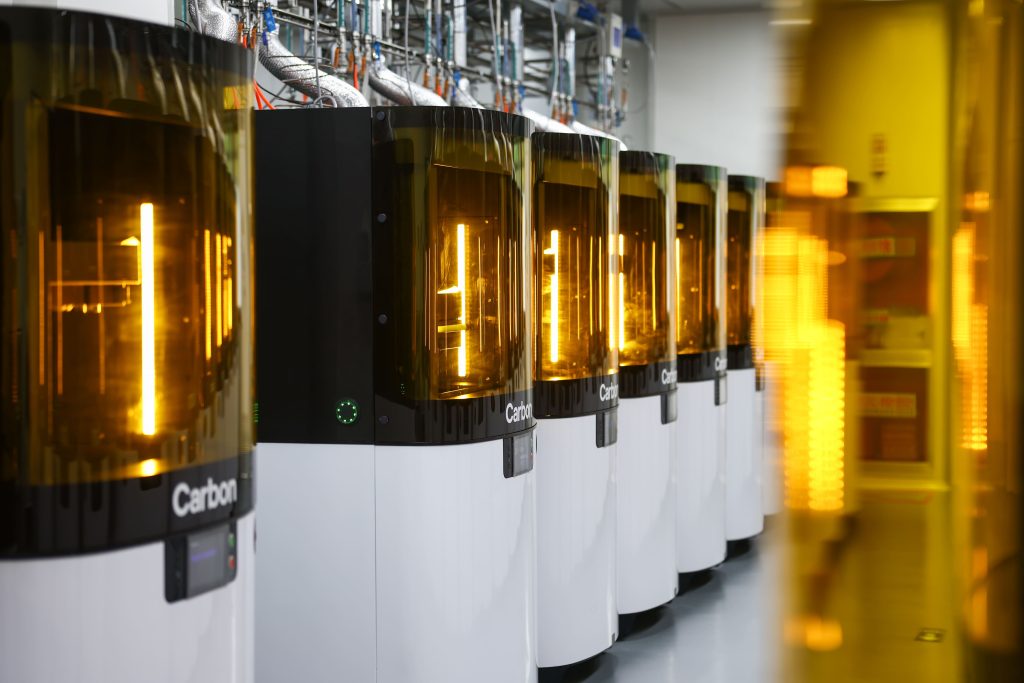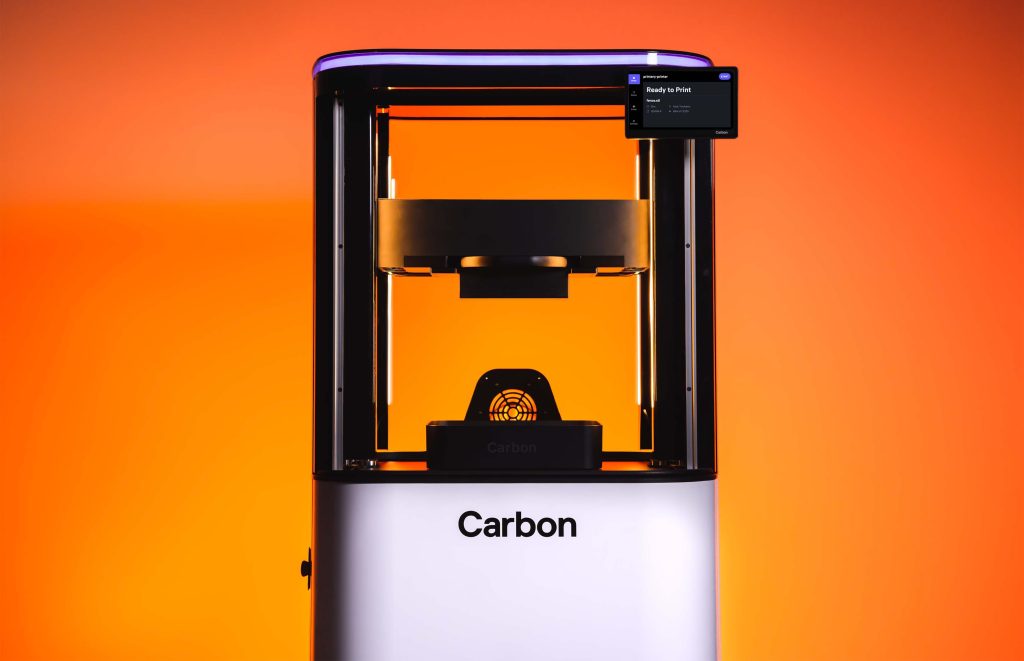Polymer technology firm Oechsler has extended its partnership with 3D printer OEM Carbon by renewing the contracts for 120 Carbon 3D printers at its production plant in Taicang, China.
Established in 2004, the facility is said to house one of the largest Carbon series manufacturing fleets in the world, covering a production area of 1,800 square meters. Until now, it’s been a cornerstone of the firms’ partnership allowing them to work with customers to 3D print a wide variety of end-use polymer products. This includes shoe soles, damping elements for American football helmets, and bicycle saddles.
To complement the contract renewal, Oechsler is also making a multi-million dollar investment in the Taicang facility to increase its 3D printing capacity to two million parts per year.
Phil DeSimone, co-founder of Carbon, says, “Carbon’s Production Network partners worldwide are an essential pillar of the Carbon ecosystem. With OECHSLER, we have a strong partnership that enables additive series production and real innovation. By extending our strategic partnership, we can not only further optimize our idea-to-production platform, but we can open up new markets together. We believe this is another milestone that will help companies bring better products to market in less time.”

The Carbon 3D printing ecosystem
Carbon’s flagship 3D printing technology is called Digital Light Synthesis (DLS), a process that leverages digital light projections in conjunction with oxygen-permeable optics to cure photopolymer resins into 3D parts. The materials used with Carbon’s systems are usually embedded with heat-activated programmable chemistries, enabling engineering-grade mechanical properties and high-resolution features.
The firm’s printer portfolio has grown over the years, now including the M1, M2, recent M3, and large-format L1.
Interestingly, Carbon somewhat goes against the industry grain and offers all of its 3D printers via a subscription model, enabling what it calls the “Idea-to-Production” platform.
Dr. Claudius Kozlik, CEO of Oechsler, adds, “I am convinced that in addition to financial predictability in terms of acquisition and maintenance cost, Carbon’s subscription model offers great benefits in the rapidly evolving Additive Manufacturing industry, including real-time support and integrated services packages at no extra costs, and, most importantly, continuous performance improvement through over-the-air updates.”

The road ahead for Carbon and Oechsler
Oechsler’s series additive manufacturing capabilities were initially implemented in Germany in 2016 in a relatively short 15 months. Shortly after, the company transferred those same capabilities over to the Taicang facility, setting up 120 industrial Carbon 3D printers over a period of eight months. Oechsler says that the high production capacity makes the Asia site a particularly important one between the two partners.
Naturally, Oechsler has built up extensive expertise across the entire 3D printing workflow over the past few years, and also offers post-processing services for customers too. This includes part cleaning and heat treatments, ultimately preparing builds for end-use.
Following the extension of the partnership, the companies plan to enter new market verticals to leverage the improved production capacity. They’ve also expressed plans to provide support for designers and engineers to develop novel 3D printable products in the long term.
Just this month, Carbon and Oechsler helped outdoor gear manufacturer Jack Wolfskin improve the weight, durability, and ventilation of its hiking packs using 3D printing technology. The firm’s new 3D Aerorise Carry System uses four independent 3D printed panels to deliver a lightweight, multi-zone body fit capable of reducing back temperatures by up to 5°C.
Oechsler also recently partnered with 3D printer OEM HP and automated post-processing systems manufacturer Additive Manufacturing Technologies (AMT) to bring powder-based 3D printing to its Ansbach-Brodswinden site in Germany. Specifically, the company expanded its service portfolio with Multi Jet Fusion (MJF) 3D printers and an integrated post-processing cell developed with AMT.
Subscribe to the 3D Printing Industry newsletter for the latest news in additive manufacturing. You can also stay connected by following us on Twitter, liking us on Facebook, and tuning into the 3D Printing Industry YouTube Channel.
Looking for a career in additive manufacturing? Visit 3D Printing Jobs for a selection of roles in the industry.
Featured image shows a Carbon 3D printer fleet at an Oechsler facility. Photo via Oechsler.



